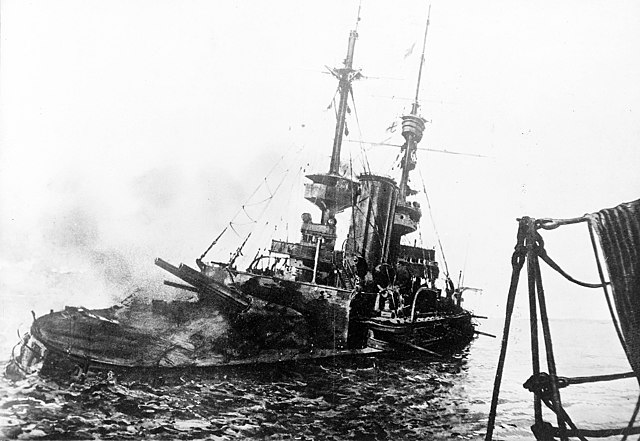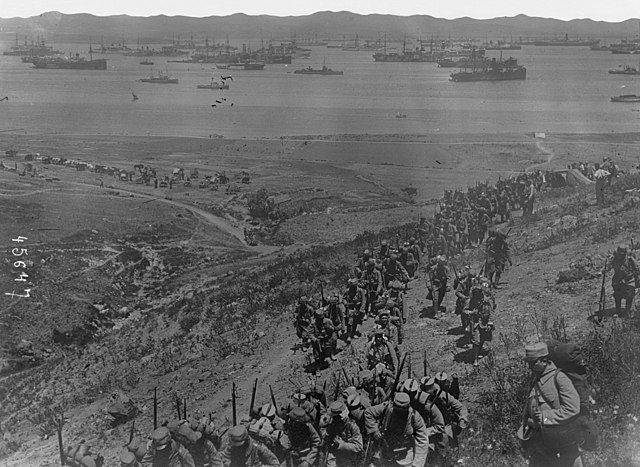The landing at Anzac Cove on Sunday, 25 April 1915, also known as the landing at Gaba Tepe and, to the Turks, as the Arıburnu Battle, was part of the amphibious invasion of the Gallipoli Peninsula by the forces of the British Empire, which began the land phase of the Gallipoli campaign of the First World War.
North Beach (north of Anzac Cove) looking south, Gallipoli, in 2014
Battleship HMS Irresistible sinking during the attack on the Dardanelles Narrows, 18 March 1915
Initial objectives for the landing shown in red; the dotted green line is what was actually achieved. Darker tones indicate higher ground.
First wave landings. The dotted lines from the red ships indicate the first six companies of the first wave. Those from the orange ships are the second six companies. The solid red lines show the routes taken once ashore.
The Gallipoli campaign, the Dardanelles campaign, the Defence of Gallipoli or the Battle of Gallipoli was a military campaign in the First World War on the Gallipoli peninsula from 19 February 1915 to 9 January 1916. The Entente powers, Britain, France and the Russian Empire, sought to weaken the Ottoman Empire, one of the Central Powers, by taking control of the Ottoman straits. This would expose the Ottoman capital at Constantinople to bombardment by Entente battleships and cut it off from the Asian part of the empire. With the Ottoman Empire defeated, the Suez Canal would be safe and the Bosphorus and Dardanelles straits would be open to Entente supplies to the Black Sea and warm-water ports in Russia.
A collection of photographs from the campaign. From top and left to right: Ottoman commanders including Mustafa Kemal (fourth from left); Entente warships; V Beach from the deck of SS River Clyde; Ottoman soldiers in a trench; and Entente positions
Panoramic view of the Entente fleet in the Dardanelles
French troops land at Lemnos, 1915.
Australian troops, Port Mudros, Greece, 20 April 1915








